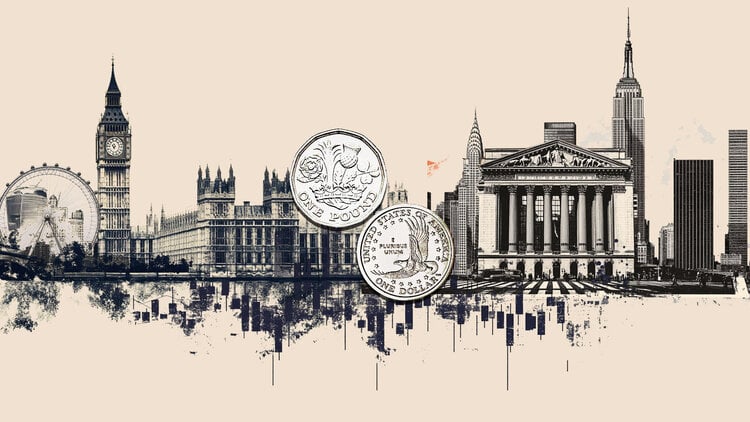- USD/CAD weakens around 1.3630 in early Asian session on Friday.
- Lower US inflation readings for June raised bets on a Fed rate cut.
- A recovery in crude oil prices could limit the pair’s upside.
The USD/CAD pair is trading with slight losses near 1.3630 after bouncing off two-month lows around 1.3588 during early Asian session on Friday. The pair is lower after lower-than-expected US inflation readings in June have fueled expectations of a Federal Reserve (Fed) rate cut in September, weighing on the Dollar.
US inflation, as measured by the Consumer Price Index (CPI), fell 0.1% month-on-month in June, the lowest level in more than three years, the Labor Department reported Thursday. The headline CPI rose 3.0% year-on-year in June, compared with a 3.3% increase in May, below the market consensus of 3.1%. The core CPI, which excludes food and energy price volatility, rose 3.3% year-on-year in June compared with the May increase and the 3.4% expectation.
In response to the data, investors in the federal funds futures market increased their bets that the U.S. Fed would cut rates as early as September. According to the CME Group’s FedWatch tool, markets are now pricing in a nearly 89% chance of a rate cut at the Fed’s September meeting, up from 73% on Wednesday.
In addition, weekly applications for US jobless benefits for the week ending July 6 rose by 222,000, compared with 239,000 in the previous week, the lowest level since June 1. This figure was better than expectations of 236,000.
As for the CAD, Canada’s unemployment rate rose to 6.4% and the economy lost 1,400 jobs in June, increasing the likelihood of the Bank of Canada (BoC) cutting interest rates further. Weaker June labor market data in Canada could weigh on the Canadian Dollar (CAD) and create a tailwind for the USD/CAD. However, rebounding crude oil prices could help limit CAD’s losses as Canada is the leading exporter of crude oil to the United States.
Canadian Dollar FAQs
The key factors determining the Canadian dollar (CAD) are the level of interest rates set by the Bank of Canada (BoC), the price of oil, Canada’s main export, the health of its economy, inflation and the trade balance, which is the difference between the value of Canadian exports and its imports. Other factors include market sentiment, i.e. whether investors are betting on riskier assets (risk-on) or looking for safe assets (risk-off), with risk-on being positive for the CAD. As its largest trading partner, the health of the US economy is also a key factor influencing the Canadian dollar.
The Bank of Canada (BoC) exerts significant influence over the Canadian dollar by setting the level of interest rates that banks can lend to each other. This influences the level of interest rates for everyone. The BoC’s main objective is to keep inflation between 1% and 3% by adjusting interest rates up or down. Relatively high interest rates are generally positive for the CAD. The Bank of Canada can also use quantitative easing and tightening to influence credit conditions, with the former being negative for the CAD and the latter being positive for the CAD.
The price of oil is a key factor influencing the value of the Canadian dollar. Oil is Canada’s largest export, so the price of oil tends to have an immediate impact on the value of the CAD. Generally, if the price of oil rises, the CAD rises as well, as aggregate demand for the currency increases. The opposite occurs if the price of oil falls. Higher oil prices also tend to lead to a higher probability of a positive trade balance, which also supports the CAD.
Although inflation has traditionally always been considered a negative factor for a currency, as it reduces the value of money, the opposite has actually occurred in modern times, with the relaxation of cross-border capital controls. Higher inflation typically leads central banks to raise interest rates, which attracts more capital inflows from global investors looking for a lucrative place to store their money. This increases demand for the local currency, which in Canada’s case is the Canadian dollar.
The released macroeconomic data measures the health of the economy and can have an impact on the Canadian Dollar. Indicators such as GDP, manufacturing and services PMIs, employment and consumer confidence surveys can influence the direction of the CAD. A strong economy is good for the Canadian Dollar. Not only does it attract more foreign investment, but it can encourage the Bank of Canada to raise interest rates, which translates into a stronger currency. However, if the economic data is weak, the CAD is likely to fall.
Source: Fx Street
I am Joshua Winder, a senior-level journalist and editor at World Stock Market. I specialize in covering news related to the stock market and economic trends. With more than 8 years of experience in this field, I have become an expert in financial reporting.







